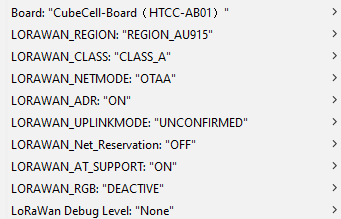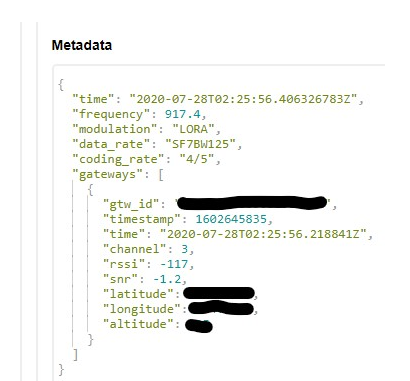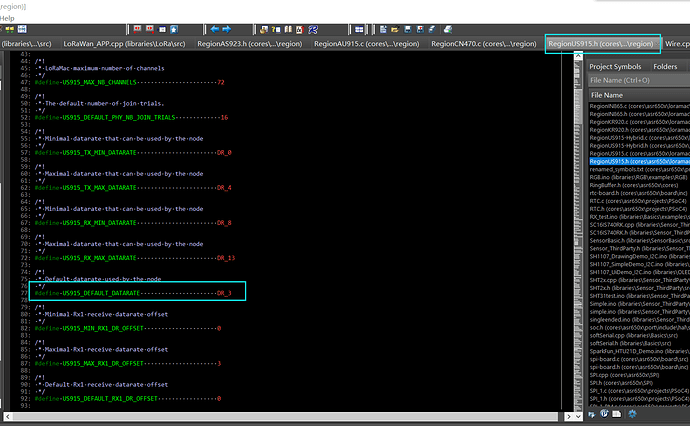Hi all,
Having some major adr issues with the cubecell boards (dev board (AB01), capsule, OLED board).
Arduino programmer settings:

I have also changed the user channel mask to 0xFF00, so that I can connect to AU915 gateways.
It seems the device will get ‘stuck’ on SF7 when it is located further away from the gateways, and not change its SF to a higher setting. I’ve also observed that sometimes the node will only attempt to join at SF7 and only sometimes increase to SF10 to try a successful join attempt.
Here is a couple screenshots of a gateway sending downlinks that are trying to tell the node to increase its SF, its as if the node is completely ignoring them. I know it can receive down links as it was able to join the network and get session keys in the exact same location… Any tips on how to get ADR reliably working would be greatly appreciated.

If I can’t get ADR working, anyone know which line in the source code I could change to hard-code the SF to say SF10?




